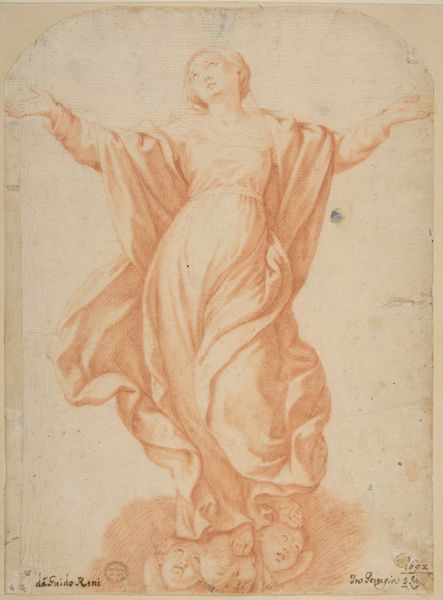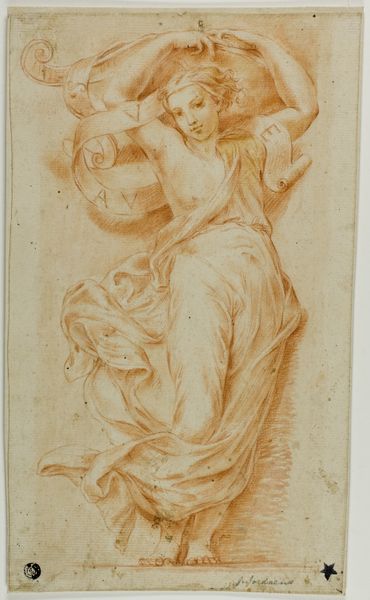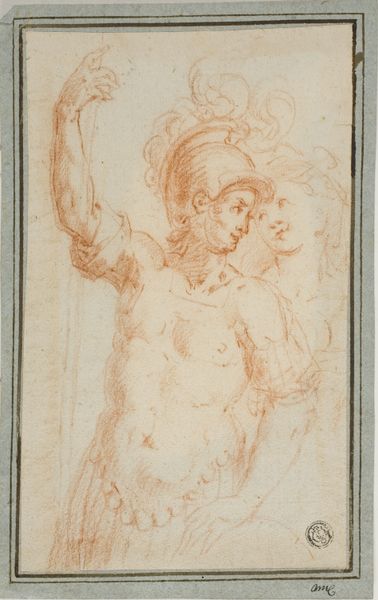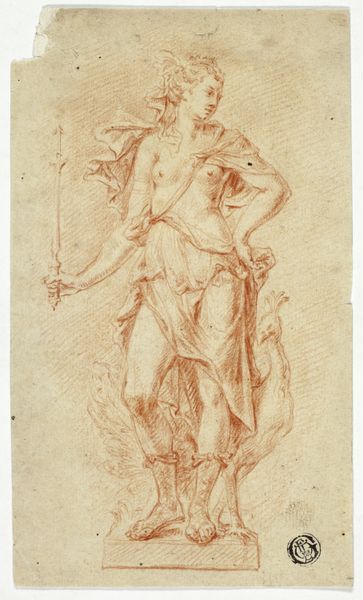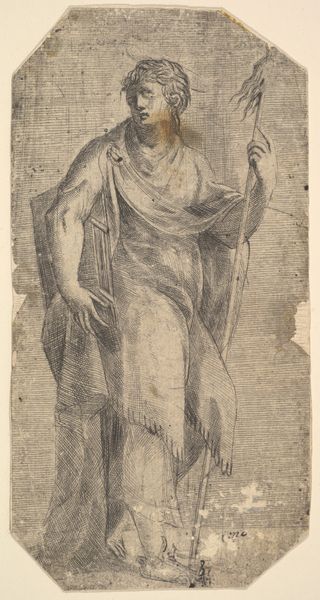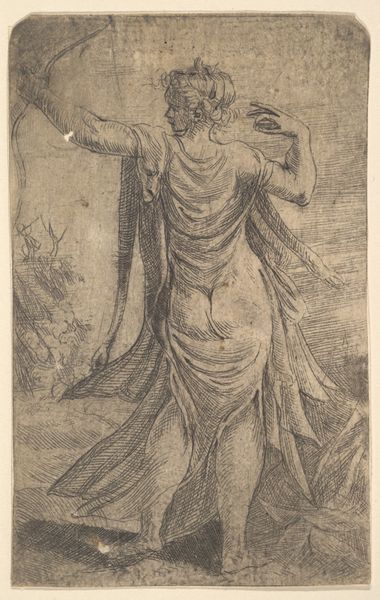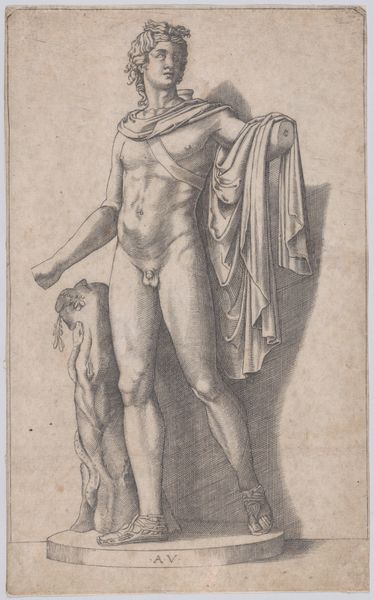
drawing, charcoal
#
pencil drawn
#
drawing
#
high-renaissance
#
charcoal drawing
#
figuration
#
11_renaissance
#
pencil drawing
#
charcoal
#
history-painting
#
academic-art
#
nude
Copyright: Public Domain: Artvee
Editor: Here we have Raphael's "Christ in Glory," created around 1519-1520, using charcoal and pencil. It’s a striking image; the figure's pose and the visible marks of the artist’s hand give it a sense of immediacy. What can you tell me about this drawing? Curator: For me, it's less about the depicted figure and more about the *process* here. Consider the availability and cost of materials in the 16th century: high-quality charcoal and paper weren't universally accessible. Raphael's access to these materials speaks to his social standing and patronage. This drawing illuminates not only his skill but also the socio-economic structure that enabled its creation. Who supplied these materials and how were they compensated? Editor: So, you're saying it is less about the religious symbolism of Christ rising, but more about who could afford quality art supplies and the labor involved? Curator: Exactly. It is fascinating how the means of production influenced the art itself. The drawing medium, its texture... how the charcoal allowed for quick changes. Notice also the blending: was that the labour of an apprentice perhaps? Each material element, each stroke reveals a piece of a larger, social network of makers and patrons. Editor: That's fascinating. I had not considered the role of artistic materials as social signifiers. I am curious now about other ways that economics or societal access to materials influences Renaissance art and its perception today. Curator: Yes, the economic structure underpinned all of it. Food for thought, indeed!
Comments
No comments
Be the first to comment and join the conversation on the ultimate creative platform.
